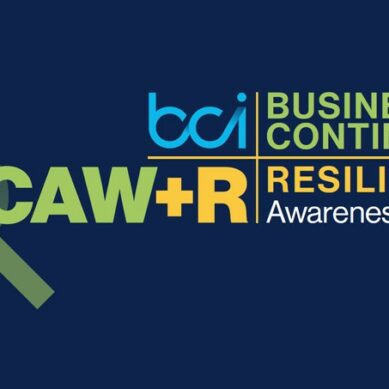Republished from Making a Data Point
“I wish I knew where to start.”
This statement is something I commonly hear from credit union professionals who are interested in doing their own data analytics, building a data analytics role, or maybe even a team. They often are told things like, “just start somewhere,” “there’s low-hanging fruit in your data,” and “ask questions of your data, then act on it,” but not specifically how to progress.
Now, there are many in the credit union industry who have already made it past these early thoughts and made great strides toward building analytics resources and talents at their credit union. But what about those who are still beginners – is that you? Maybe you know what you want to do but not how to do it? It can be overwhelming to begin developing these roles and skills, but you’re not alone, and you’re not without support.
You need a person (or persons?)
Or, to be more specific, you need a curious, methodical, purposeful person who is a good communicator. Is that you? If you’re an executive, you probably have all those character qualities, but depending on your credit union’s situation, it may make more sense to delegate the work.
If it’s not you, does anybody else at your credit union fit this picture? If nobody comes to mind right away, think about who at your organization has that spark of curiosity. Someone who is often looking for new, interesting, or better ways to do things. When given a task, these people will say, “Ok, why? How does this fit into the bigger picture of my job or the credit union?”
This part—finding your person(s)—is more important than you might think, because it really is about the soft skills rather than the technical skills. You can train technical skills into anyone who has a curious mind; it’s harder to train an analytical mind into someone who doesn’t have that inclination already.
Easy wins, low-hanging fruit, work smarter not harder
All those clichés are easy to say, but they can be frustrating because they make promises and give no clues or instructions on how to deliver. I’m certainly capable of coming up with a game plan myself, but do the people who say these things even realize that the game planning (i.e., time, introspective thought, inventorying resources, interviewing interested parties, brainstorming and prioritizing ideas, etc.) still needs to be done?
That said, I’m guilty of occasionally saying these clichés myself. There’s merit to these ideas, but someone (maybe you) has to actually translate these ideas into individual objectives and the tasks to accomplish them.
To that end, I would like to suggest considering the following ideas for tangible ways to begin.
1. The business plan
What are your credit union’s business goals for the current fiscal year? Ask for a copy of your credit union’s business plan and interview executives to hear their perspectives and their top priorities. There is no guarantee their top priorities will be “easy” to analyze, but sometimes an easy win can be found by opening their eyes to a report or dashboard that they’d never seen before.
Key point: try not to promise there will be research or an analysis on every idea.
In this early phase, you’re getting your mind around the idea of data analytics and how it fits into your credit union. Write down any ideas you hear, including any that are inspired by conversations you have. After you’ve finished this gathering and brainstorming process, evaluate the entire list to look for the ones which truly will be easy wins or low-hanging fruit and start with those.
The goal early on should be to receive ideas and perspective, not to promise or deliver anything yet. Otherwise you’ll end up on rabbit trails or starting a complicated project that eats all your time without any opportunity to actually deliver quick value. If you’re an executive reading this blog – this means it may not be the best idea to start your new analyst on defining and building your CECL model right away. Necessity is necessity, but understand committing to a huge long-term project right away for the analyst has a high risk of entirely killing the easy-win forward motion that helps with those early goals of winning over other staff, process development, and driving internal excitement about data analytics.
2. Don’t spend money yet – use your free resources
It’s tempting to look at what analytics firms offer and reason that spending money for their software or analysis packages will provide an easy win. But don’t forget the hidden costs of spending time learning new software and that outsourcing the work of analyzing your own data generally means that from a skills perspective, you are still exactly where you started.
Don’t get me wrong, I work on an paid analytics team and I absolutely see the value in outsourcing certain projects for time-savings when you don’t have staff to do your data analytics. But if you’re trying to be purposeful about developing data analytics skills and talents internally, make sure the firm you hire will take the time to educate you on the process and variables of results as they hand off the work.
I mostly work with credit unions on one specific processing core, and there are hundreds of free data sources and analysis tools to begin your journey. My top recommendation for my clients is to first narrow it down to the 5-10 most relevant options for your credit union’s business objectives.
3. Start with finding and graphing trends
Those spikes and valleys across time can speak volumes! One, it’s a visual representation of the data which often is more helpful for quickly communicating results to others, and two, there is astronomically huge value in the historical context that a trend line gives. You instantly see patterns and build an opinion of what “normalcy” is for this data point with today’s data compared to historical snapshots in time.
This concept of normal is vital to data analytics. Being a smart data consumer and analyzer means you have at least some idea of what’s a normal stat for your credit union on certain topics. Having that baseline understanding can help you to begin quickly noticing when values start jumping up or down toward abnormal. Scan for patterns you wouldn’t have expected to see—maybe you’ve just found a problem or a reason to celebrate!
Is that loan product portfolio balance tanking too fast? That needs further research and the immediate attention of your loan staff. Do you see a 20% jump in eStatement enrollments after the end of that last promotional campaign? Sing the praises to the entire credit union.
Rome and marathons and all that
Rome wasn’t built in a day. It’s a marathon, not a sprint. While cities and marathons aren’t exactly the same, the message is. Find your starting point, take action, and build from there. You will be one step ahead of the next guy who’s still talking about it instead of doing something.
























































